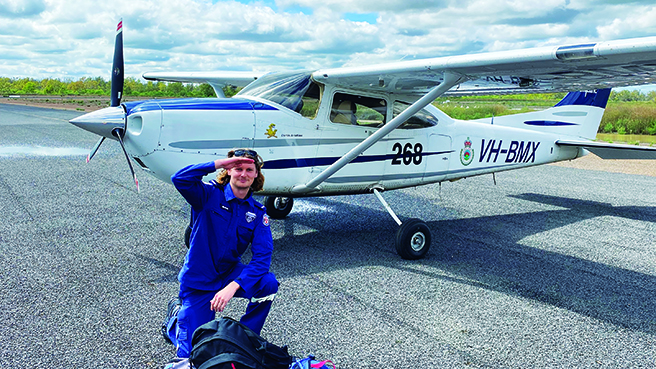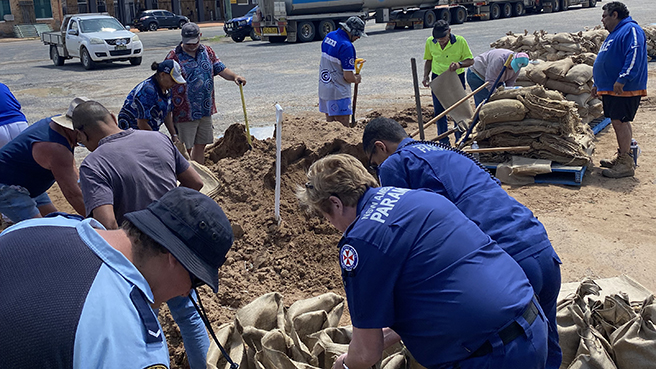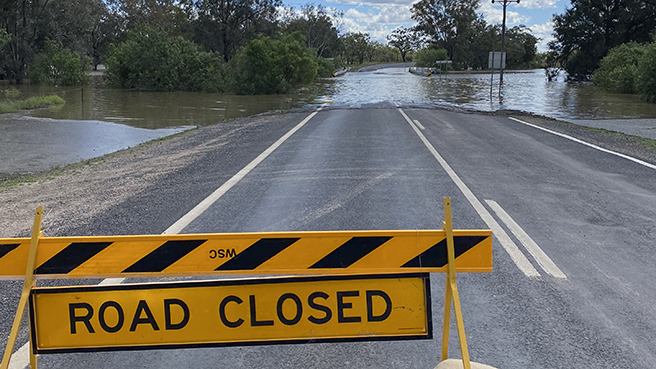
When the paramedics of Collarenebri – population 300 – found their town cut off by floodwaters, they dug deep to keep their community safe.
When the call for people to fill sandbags went up on Collarenebri’s community noticeboard last October, local ambulance station staff were quick to respond.
With flood waters threatening the north-western town, station staff – both on-duty and off-duty – bent their backs alongside volunteers and other emergency service personnel.
“For four days we helped make sandbags to build a levee,” Acting Station Officer at Collarenebri Josh Pearson said.

When the La Niña weather pattern flooded every river catchment in western NSW in late 2022, residents of Collarenebri in north-western NSW found themselves effectively cut off from the world.
“We were isolated for around three weeks, and road closures limited our access for nearly six weeks,” Josh recalled. “There was no road freight, so we were dependent on helicopter drops of medical supplies and groceries.”
The isolation saw the deployment of several disaster response agencies – NSW State Emergency Service, NSW Marine Rescue and QLD Fire Rescue Inland Water rescue teams.
“Working alongside each other really brought out the community spirit – and our efforts didn't go unnoticed. There were many subsequent BBQ invitations, as well as meetings with other teams and residents to discuss the impact of the flood and everybody's role. As a result, the collaboration between agencies was excellent.”
When the nearby Indigenous community Walli Village was cut off from Collarenebri, the SES established a ferry service for the village which NSW Ambulance used to retrieve a paediatric patient for treatment.
Two paramedics who live outside the community on their days off were flown in by the NSW Rural Fire Service.

“The event was a steep learning curve for us, highlighting the challenges of isolation by floodwater in an already remote community,” Josh said.
“It was a lesson in the challenges of emergency response in a dynamic situation and the importance of frequent SitReps and updated SMEACS (Situation, Mission, Execution, Administration and Command system).
“This was an experience I’m sure all of our staff will remember throughout our careers in NSW Ambulance.”
